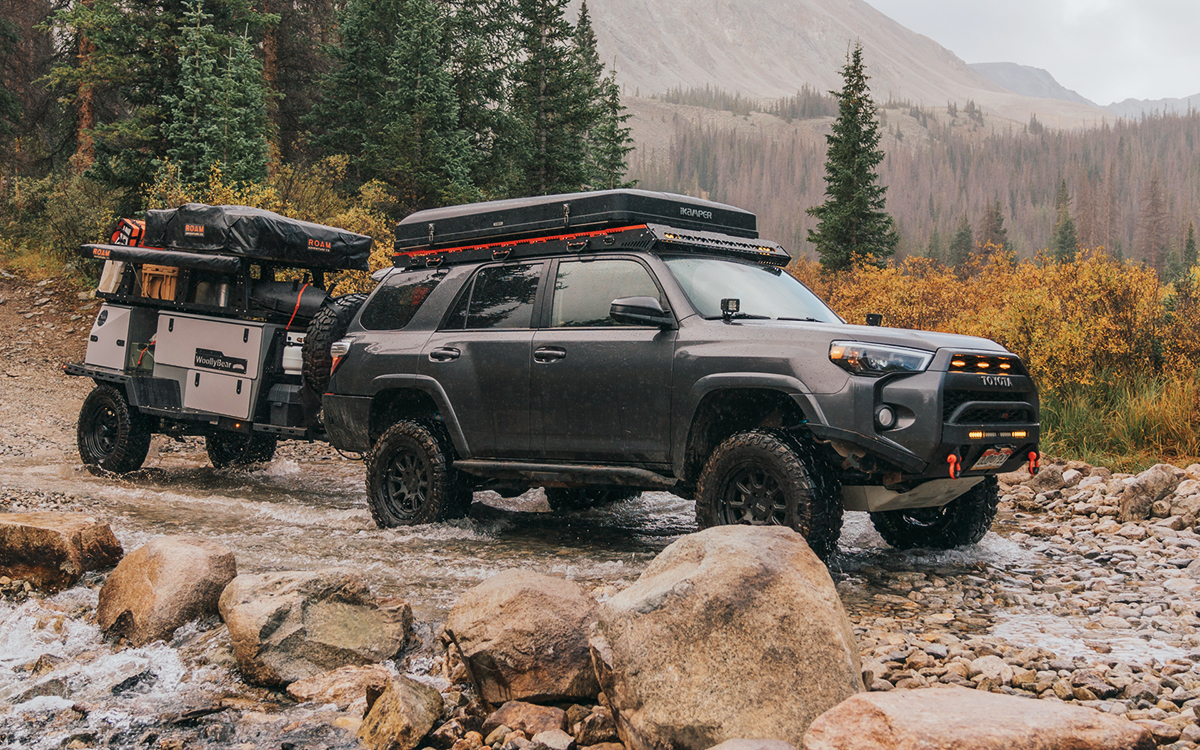
Space-Saving Exploration
Subheadline
Space habitat expertise drives recreational vehicle design
Next to a beach, it’s raining, so a family of four eats lunch inside their camper. After a hike in a national park, an empty-nester returns to a campground to cook dinner over an open fire and watch the sunset. Because there’s more than one way to go camping, Taxa Outdoors Inc. builds trailers designed with a NASA-style approach to human habitats. The Houston-based company creates compact, customizable living spaces to support terrestrial outdoor adventures.
Garrett Finney, CEO of Taxa, said he was “wildly influenced” by his former role as senior architect with the Habitability Design Center at NASA’s Johnson Space Center in Houston. The effort to create a human-focused living space on the International Space Station allowed him to develop specialized knowledge about small spaces and related equipment. He later returned to the agency as a consultant to support lunar habitat studies. All the while, he was an avid camper.
Bringing those two interests together to create “mobile human habitats built for adventure,” Finney designed the first camper, called the Cricket,
“The founding idea of the company is that camping is really important. We’re giving people a multi-use adventure machine that allows them to be out in the environment,” said Finney. To do that, the company employs the three-dimensional approach used in space habitats to meet the most important needs, using every surface in multiple ways. A roof that offers protection and transport cargo also has hooks inside to suspend mesh storage nets or hang retractable sleeping cots for children.
Inspired by the highly efficient use of space in astronaut quarters where all surfaces, such as walls, ceiling, and floor, pull double duty for storage, the Woolly Bear has plenty of compartments and a top-mounted tent. The tailgate serves as a portable kitchen with a built-in awning and space for chairs and other party supplies. The Tiger Moth is a small camper that can comfortably sleep two adults inside. A rooftop tent can accommodate two friends.
For larger groups, there’s the Mantis, which can easily accommodate four adults and has more of the comforts of home to make camping with small children or year-round camping easier. The 105-square-foot space has lots of storage along with an indoor kitchen area, built-in shower, air conditioner, furnace, and more. Just as a spacecraft must generate its own power using solar panels and store electricity in batteries on board, this and other Taxa trailers can do the same, eliminating the need for an electrical hookup.
Every model has an off-road version called Overland. Increased ground clearance, all-terrain tires, and other elements improve durability and make it easier to go off the beaten path.
In contrast to the mini-house approach of a large recreational vehicle, Taxa prioritizes efficiency. That doesn’t mean “ruthlessly pared down,” said Finney, but rather the “most succinct answer” to the complicated challenge of getting individuals and families of all sizes anywhere they want to go.
All the designs are compact enough to fit in standard garages and lightweight enough to be towed by most standard four-cylinder passenger vehicles.
And the company isn’t stopping there. Details about an upcoming product line aren’t available yet, but Finney offered a hint: “Not all habitats have wheels.”
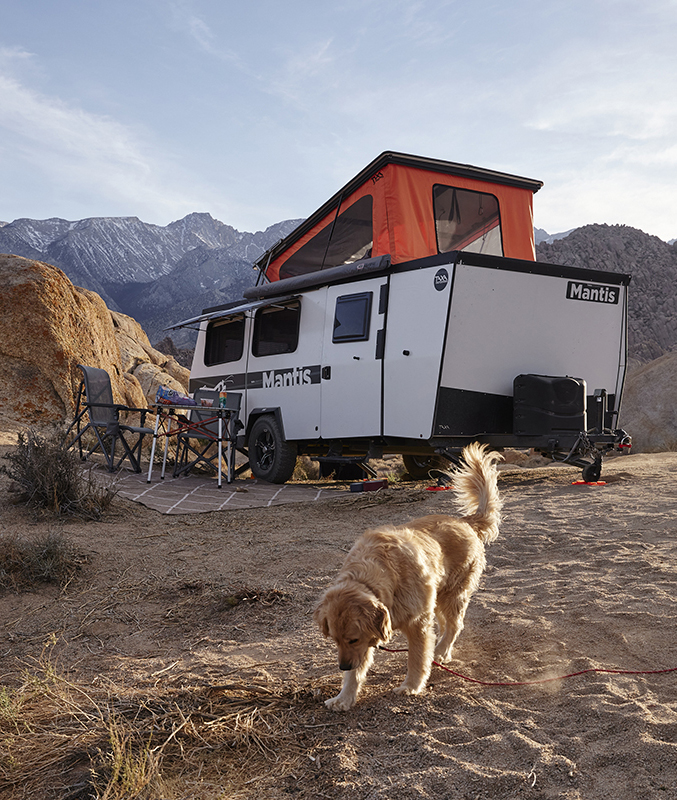
The largest of Taxa’s campers, the Mantis can keep a family safely tucked in at night and away from the elements. A bench seat for daytime reading converts into bunk beds, and power for the cooktop stove and reading lights comes from onboard batteries. Credit: Taxa Outdoors Inc.
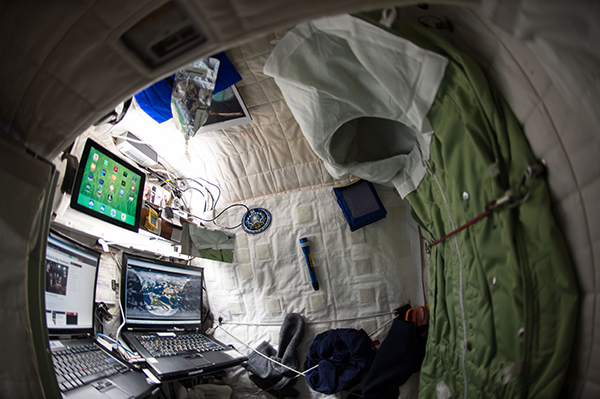
Astronauts have extraordinarily little personal space while onboard the International Space Station, so the area is designed to use all surfaces – walls, ceiling, and floor – as this image of astronaut Scott Kelly’s crew quarters demonstrates. This highly efficient use of space inspired the design of Taxa trailers. Credit: NASA
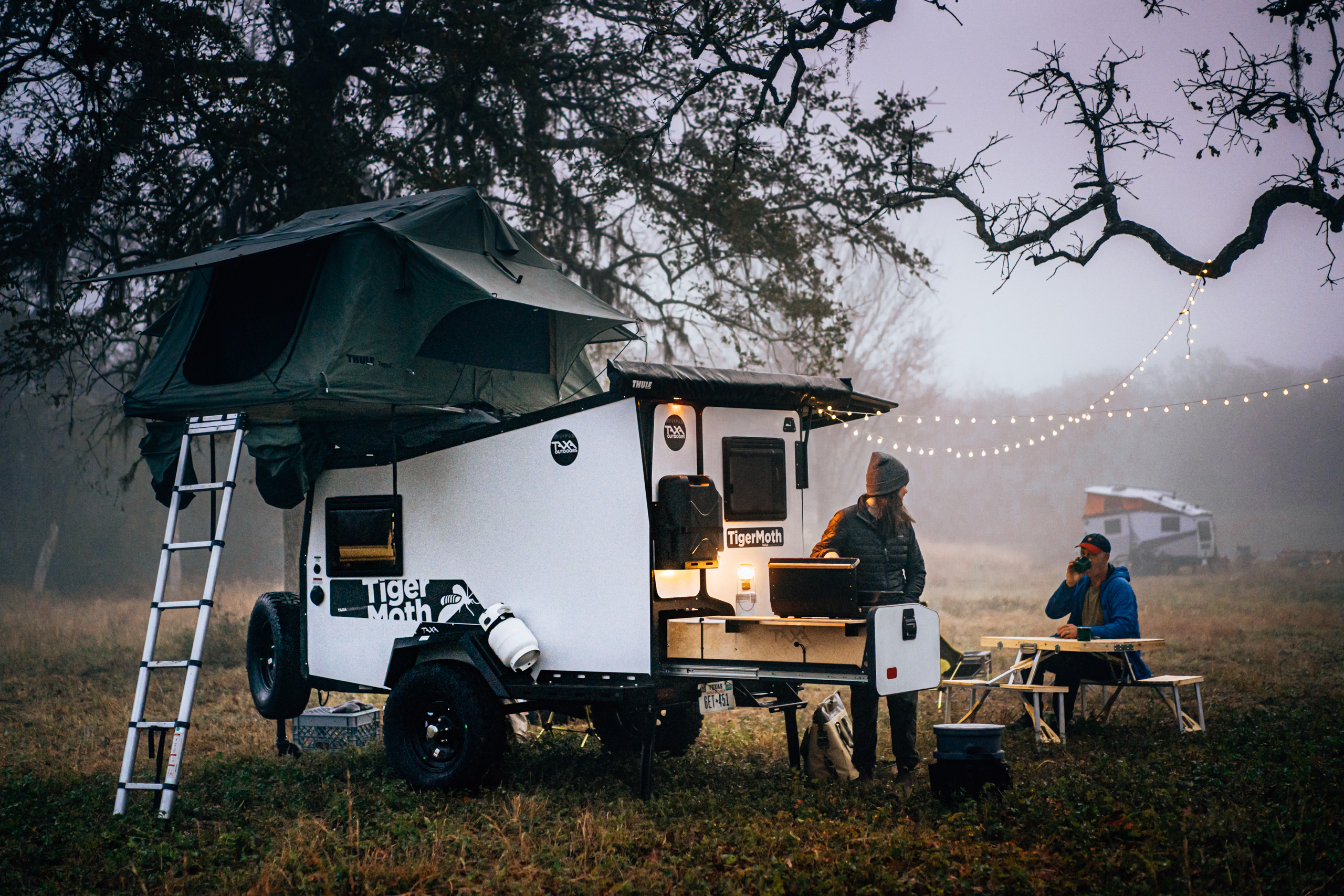
Named after an insect, the Tiger Moth camper is large enough to sleep two people inside and two more in a rooftop tent. Customizable storage compartments secure everything from plates and cups to fire starters and a cook stove. Credit: Taxa Outdoors Inc.
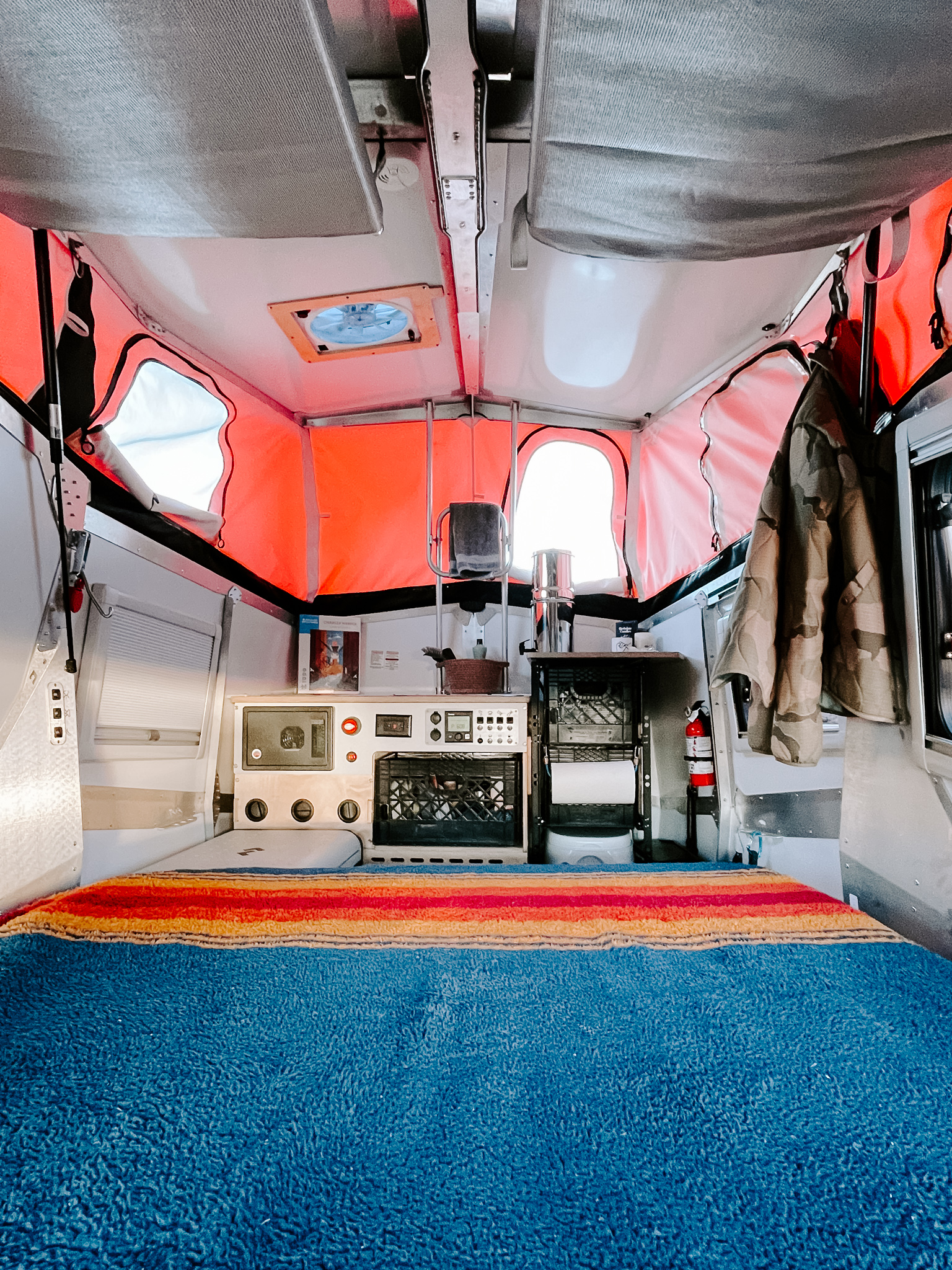
Taxa campers can be tailored to meet individual needs. To make winter camping comfortable, add a furnace. Have kids? Add cots attached to the ceiling. Swap out a storage crate for a portable toilet. But all are designed to make the most of natural light and maximize air circulation. Credit: Taxa Outdoors Inc.
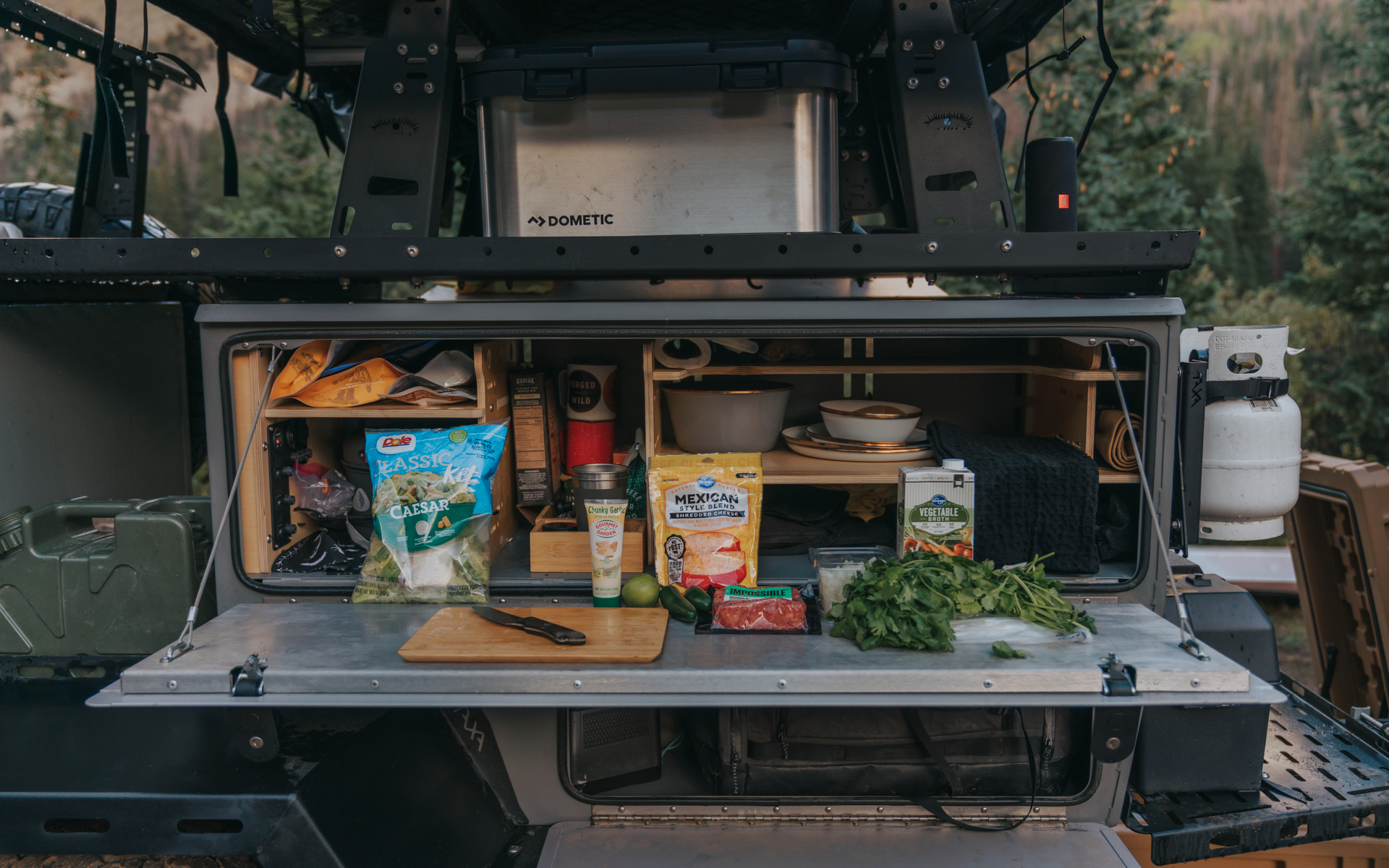
The Wooly Bear is for the minimalist camper who wants to spend a lot of time outdoors. Every surface is designed for efficiency, including a storage compartment door that doubles as a food prep surface when it’s time to make dinner. Credit: Taxa Outdoors Inc.

Going off the grid or to a state park, Taxa trailers are lightweight enough to be towed by a car with a four-cylinder engine and durable enough to navigate roads that are off the beaten track. And they’re small enough to fit in a garage, ready for a weekend away at a moment’s notice. Credit: Taxa Outdoors Inc.













